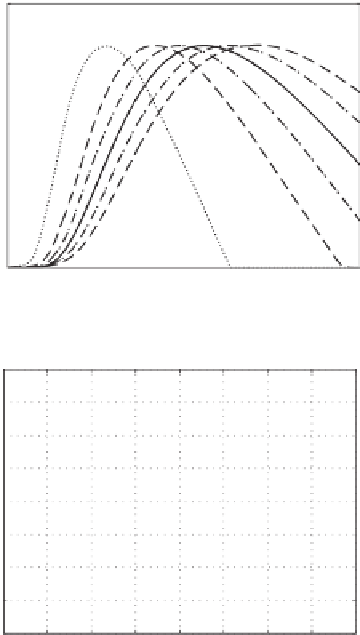Environmental Engineering Reference
In-Depth Information
0.5
v
w1
0.4
v
w2
0.3
v
w3
v
w4
0.2
0.1
v
w6
v
w5
0
0
0.2
0.4
0.6
0.8
1
1.2
1.4
1.6
Turbine speed (pu)
(a)
C
p
as a function of the turbine speed normalised to the rated speed
1.6
1.4
v
w1
1.2
1
v
w2
0.8
0.6
v
w3
0.4
v
w4
v
w5
0.2
v
w6
0
0
0.2
0.4
0.6
0.8
1
1.2
1.4
1.6
Turbine speed (pu)
(b) Power
P
m
Figure 1.40
Power coefficient
C
p
and mechanical power
P
m
at different wind speeds
wind turbine is shown in Figure 1.42, with major components including blades, a rotor hub,
drivetrain (bearing and gears, etc.), a generator and the associated control system.
Wind turbines can be used for stand-alone applications, connected to a utility power grid or
even combined with photovoltaic systems, batteries and diesel generators, etc. to form hybrid
systems. Small-scale wind turbines are often used in stand-alone applications, e.g. for water
pumping, communication stations, and supply of electricity to farms and light towers, etc. that
are far from the utility grid. For utility-scale applications of wind power, a large number of
turbines are usually built together to form wind farms to fully utilise the available wind power
and to reduce the investment cost on infrastructure.
A wind turbine can be designed for fixed-speed or variable-speed operation. Variable-speed
wind turbines can produce more energy than fixed-speed ones but power electronic converters
are needed to provide a voltage at a fixed frequency and a fixed amplitude.
Most turbine manufacturers have opted for a direct drive configuration to remove the
gears between the low speed turbine rotor and the high speed three-phase generator. This












Search WWH ::

Custom Search